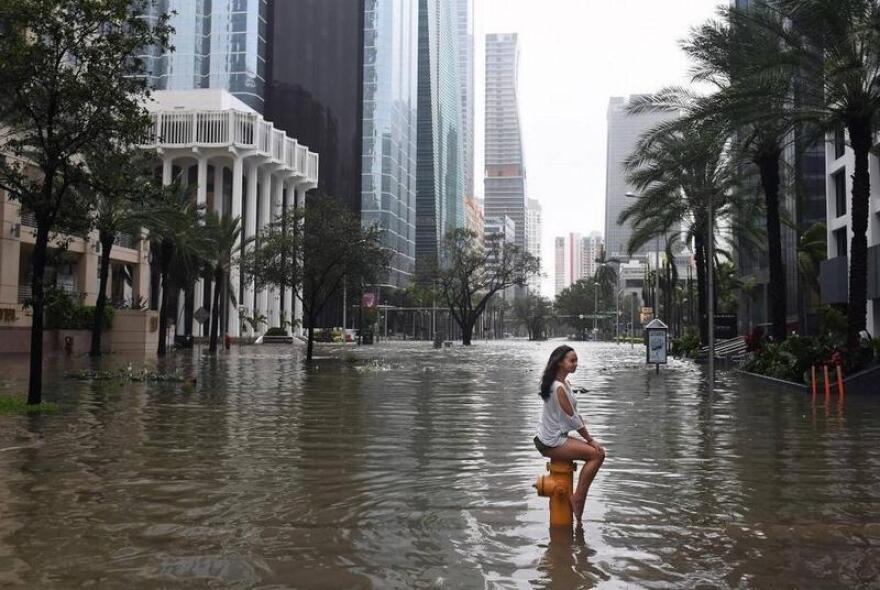When Hurricane Irma made landfall in the Florida Keys in 2017, it sent a four- to six-foot storm surge to Biscayne Bay more than 100 miles away, flooding busy Brickell Avenue.
The U.S. Army Corps of Engineers now has a tentative plan to fix that: massive flood gates and walls that could include a two-mile stretch in the heart of downtown Miami.
Earlier this month, Corps engineers briefed Miami-Dade officials on the progress on a $3 million, three-year study that will determine a final plan.
While still in its early stages — a more detailed draft plan is due in the spring — the flood gates and walls extending into neighborhoods and across roads presented at a fall public meeting remain among the list of options. And that’s drawing the scrutiny of local officials.
“We don't have any experience in Miami-Dade or in Florida with the kinds of barriers that are being described,” Miami-Dade resiliency chief Jim Murley said. “They exist in New Orleans. They exist in Norfolk, places in New England.”
It’s a different story in South Florida, he said.
“When you put that down on the flat landscape of very urban South Florida, it raises all sorts of questions about evacuation, about where the wall is placed from the shoreline landward,” he said.

Corps officials say that while the fortress-like walls are in the plan, placement and design details are far from final. At this point, project manager Holly Carpenter said the Corps is focusing only on general flood plains.
“On a block-by-block basis, the flood walls and surge barriers may change throughout the study and even more so as we get into the pre-construction, engineering and design phase,” she said, which would follow this feasibility study.
The structures roughed out in the tentative plan include a flood wall stretching more than two miles from PortMiami to the Julia Tuttle Causeway. Flood gates are being considered for the Miami River, Little River and Biscayne Canal, which would be attached to walls reaching into neighborhoods. They could also include pumps.
The plan is also taking a close look at seven neighborhoods where the Corps identified property vulnerable to repeat flooding.
“In other parts of the country, they're typically being done on much smaller geographic areas,” Murley said. “The size of the county meant that they couldn't do 100 percent.”
In those areas, single-story houses and other structures could be elevated. The government might also try to buy out property owners.
The agency plans to roll out the draft plan in April or May, when it will also unveil an environmental study looking at impacts. Once it obtains comments from the public, local officials, environmental groups and others, Carpenter said engineers will revise the plan and send it on for approval to the Corps’ Chief of Engineers by 2021. From there, the plan goes to Congress for approval.
The lengthy process, similar to projects constructed in the ongoing Everglades restoration effort, could take years. And Carpenter warned that even if approved, only about 10 percent of the design work will be complete because of budgeting.
“At this point in the study, we're looking to see if those alternatives are economically justified,” she said.
If approved, the Corps and county would divide the cost, with the Corps picking up 65 percent. The county could also reject options, Murley said.
“Being able to fund everything we'd like to do so is certainly attractive to us,” he said.
While the plan so far focuses largely on built features, scientists and resiliency experts say improving natural barriers like wetlands and mangroves might ultimately be more beneficials. Both help clean water and stabilize fragile coastlines. So far, mangrove restoration is being considered only for a short stretch of shoreline north of Cutler Bay and south of the Deering Estate.
“We've made it real clear to the Corps that it’sgoing to take a lot of discussion and input from our perspective. I think they heard us loud and clear on that,” Murley said. “We're certainly not going to take a position on these barriers until we have a lot better information.”






